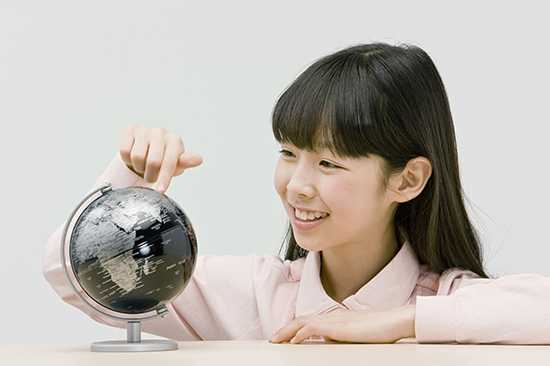一直以来,雅思口语Part2物品类话题属于比较难的一个部分。但审题、谋篇、扩充的组合就是一种击败较难话题的有利武器。
本文以“让你感到骄傲的照片”为例,将Part2物品类题目化解分为三个步骤,分别讨论如何审题、破题、如何谋篇布局、以及信息扩充,从而完成下面这道题目。

Describe a photo you took that you are proud of
you should say:
when you took it
where you took it
what is in this photo
and explain why you are proud of it
0步:雅思考试之审题、破题
首先明确描述的主体信息,具体是人、物、地、事的哪个类型。
然后关注主体信息是否有限制部分。如没有则根据主体自身特点破题;如有限制部分,则需要围绕限制部分来破题。
此题的主体信息为物品类“photo”,得知本题是物品类,被描述的对象是一张照片。此题限定信息包括两个部分,一个是“you took”,而另一个限定是“you are proud of”,这两步均是破题的关键。
围绕这两个破题限定点,这张照片必然与你有关联,它可以是一张内容有你的照片,也可以是一张你拍的其它照片,但不论哪一种,这张照片必须值得你骄傲。
因此,它是一张内容有你,并且可以通过一定象征意义,如friendship友情,nostalgia怀旧,achievement成就等方面来体现值得骄傲;或者它是一张你拍摄的照片,同时骄傲自己的拍摄成果,如beautiful photography composition摄影创作,one of a kind snapshot独特的快照等等。
第二步:雅思考试之谋篇布局
Part2整体谋篇布局是建立在一个更完整的结构上,可以对cue card(题卡)中的小问题进补充、合并、改序等操作。
而物品类的这个结构分为三个部分,分别是背景引入部分、可视描述部分、联想描述部分。
1.背景部分主要是物品的背景出处,包括when, where, who, what, why。此题,0问when、及第二问where就属于背景部分。但如果需要增加背景部分信息,可以充分利用什么时候、在哪儿拍的、谁拍的、做什么时拍的、以及为什么会拍来增加这部分的信息输出量。
2.可视描述部分一般是物品的外部特征,包括样式、尺寸、颜色、材质等方面,而此题photo则为照片中全部可以看到的信息。
比如人物、风景、建筑、或其它物品等,对应问题“what ’s in this photo“。
此题中可视描述比较多,所以可以把问题拆分成who’s in the picture + what’s the rest of the photo like。
3.联想部分指的时物品内在信息,包括特点、作用或意义等实际或情感价值。这部分常见对应问题往往是“why...为什么”, 或“how you felt about it总结感受”这类信息。
此题中“and explain why you are proud of it” 就可以是一些反应good old days过去的美好时光,team spirit团队精神,personal endeavor个人努力之类的情感价值。
由此,此题最终布局为:
背景部分:
When you took it
Where you took it
可视部分:
What is in this photo
Who did you take it with, or who’s in the picture
What’s the rest of the photo like
联想部分:
and explain why you are proud of it
第三步:雅思考试之信息扩充
背景部分:
0问:When you took it
When同样采用大方向时间+具体时间的方式
也可以理解为在干什么的时候:
what you were doing
比如,大方向时间描述:it was roughly/back to...years/months/weeks ago;
具体时间描述:
at that time/when/and sb was doing sth
第2问:Where you took it
Where可以先给出大地点,扩充信息给出具体发生的位置,或不做拓展。
描述具体位置时,可以尝试使用一些地道表达,比如,
表述近:
a stone’s throw from,within easy reach of;
表述远则可以说:
at a distance from,at a distance from;
表述偏远可以用:
in the middle of nowhere,god knows where等。
Example:
The photo that I am proud of is the one I took in Beijing. It was roughly 5 years ago and I was studying in the Institute of Cervantes.
可视部分:
第3问:What is in this photo
1) Who did you take it with, or who’s in the picture? + details (心情/表情/动作)
首先回答问题,这里直接给出拍照的人,比如,I took it with …
扩充信息,则可以通过人物的心情、表情、动作,结合实际照片信息来描述。
参考语料
1.心情:
thrilled高兴激动 high-spirited兴高采烈的 down in dumps难过忧郁 melancholic抑郁的
2.表情:
happily surprised惊喜的, sadly angry悲愤的,fearfully confused惊恐困惑的,funny滑稽的,happy开心的,thoughtful沉思的,stressful压力大的
3.动作:
do/make the victory sign做胜利手势,make a duck face嘟嘴,wave hand挥手,give thumbs up竖起大拇指,breathe a sign of relief松了一口气
Example:
I took it with the other 8 students and my Spanish teacher. Everyone was smiling with a victory sign and you could tell how happy we were, cuz that was the day when we passed the B2.2 exam. Everyone breathed a sign of relief and no one was looking stressful in the photo.
2) What’s the rest of the photo like?
这一问的信息扩充补充可以根据照片的前景foreground、中景middle part、远景/背景background,提供其他人物、风景、建筑等信息。比如:
人物 :
in the foreground, there’re actually some other participants and students...
风景:
the background scenery is quite amazing with high mountains, a mirror-like lake...
建筑:
we took the photos outside the school stadium, football field...
也可以使用标识方位的表达,给出照片内容信息,如behind / in front of / next to us was the school stadium, football field …
Example:
The background is a row of chairs and big glass windows, on the left side there are the blackboard and projector. The person who took the photo took it at a perfect timing, cuz there was enough sunlight in the room, which makes the picture more attractive.
联想部分:
第5问:Why do you feel proud of this photo?
破题时已然发现对于照片的骄傲源于2种, 一种是照片本身拍的很好, 第二种是它的意义价值。
一、拍得好
拍的好主要反应在以下几个方面,上镜 photogenic 、构图composition、色彩the color、光线the lighting、时机timing等。
Example:
I’m also satisfied with the color, the lighting, and the composition.
1)这部分主要通过a sense of achievement成就感, how arduous in the process过程的艰辛,以及personal endeavor个人努力这些来呈现。
相关表达:
1.Burn the mid-night oil to do something 挑灯夜战
比如: during the process, I burned the mid-night oil for almost a month trying to get good results.
2.have a hard time + 动词ing 好不容易做了某事
比如: during the process, I had a hard time designing the model设计模型, completing the essay完成论文, as well as finding academic references查找学术文献.
Example:
I am proud of this picture primarily because it reminds me of the high score I got in that exam, which was uneasy for a Chinese major who hadn’t studied any new language for a long time, and I can still remember the time I spent that year with my Spanish teacher and the classmates from Russia and the UK.
2)如果时间还没有到2分钟,可以再加一句:How you feel?
此部分可以简单概括对此物品的评价,或根据时间线,从过去到现在,描述现状如何。
Example:
By far it’s been one of my favorites. I put it in a photo frame. Now it’s on the table in my bedroom.
Sample Answer:
背景部分:
The photo that I am proud of is the one I took in Beijing. It was roughly 5 years ago and I was studying in the Institute of Cervantes.
可视部分:
I took it with the other 8 students and my Spanish teacher. Everyone was smiling with a victory sign and you could tell how happy we were, cuz that was the day when we passed the B2.2 exam. Everyone breathed a sign of relief and no one was looking stressful in the photo.
The background is a row of chairs and big glass windows, on the left side there are the blackboard and projector. The person who took the photo took it at a perfect timing, cuz there was enough sunlight in the room, which makes the picture more attractive.
联想部分:
I am proud of this picture primarily because it reminds me of the high score I got in that exam, which was uneasy for a Chinese major who hadn’t studied any new language for a long time, and I can still remember the time I spent that year with my Spanish teacher and the classmates from Russia and the UK. The icing on the cake is that I’m also satisfied with the color, the lighting, and the composition.
By far it’s been one of my favorites. I put it in a photo frame. Now it’s on the table in my bedroom.
以上就是关于逐步化解雅思口语Part2物品类难题的分享,今天的分享就到这里啦,大家都“学废”了吗?